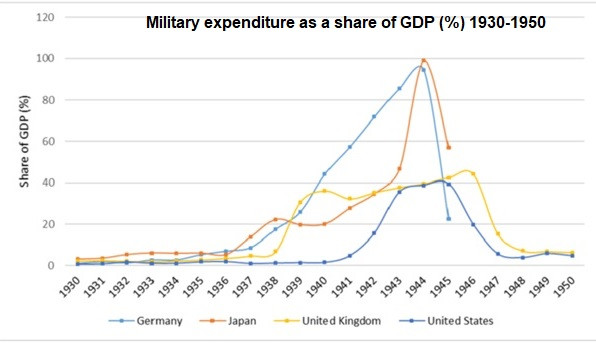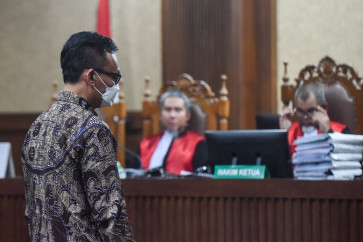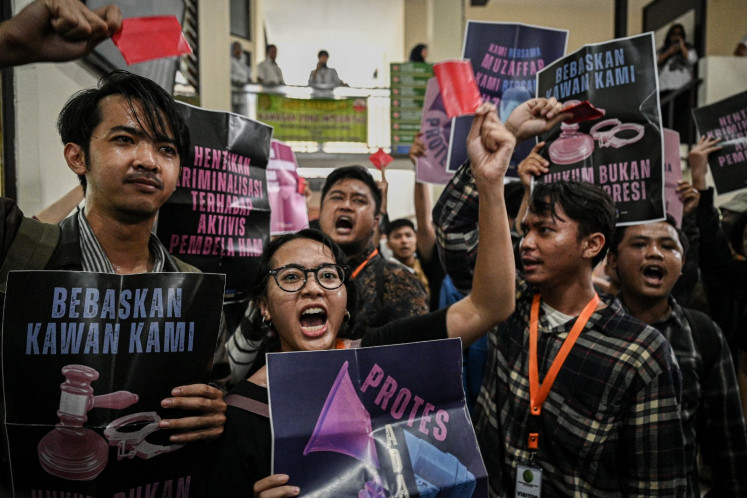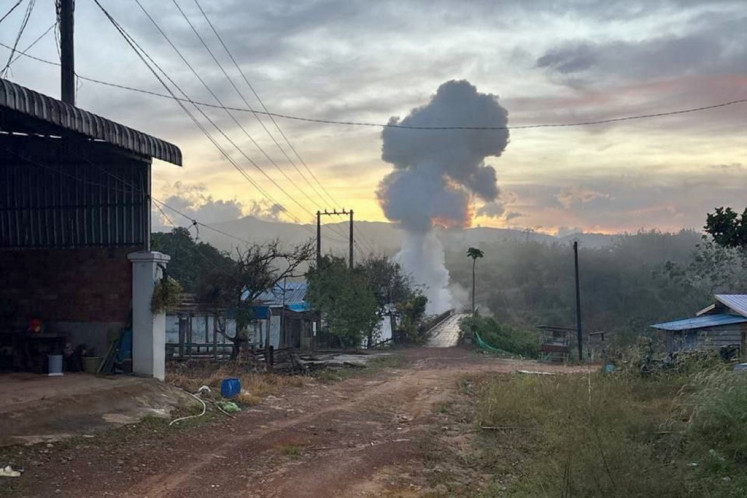Popular Reads
Top Results
Can't find what you're looking for?
View all search resultsPopular Reads
Top Results
Can't find what you're looking for?
View all search resultsThe world is back to the 1930s war economy
The United Nations has issued a five-point agenda in an attempt to redefine security but the bottom line is that war is profitable and it is the same old battle of short-term vs. long-term gains, pitted against the very survival of our species.
Change text size
Gift Premium Articles
to Anyone
T
he American author Mark Twain quipped that history does not repeat itself, but it often rhymes. With European economies promising to up their defense expenditure to 5 percent of gross domestic product (GDP), are we repeating the 1930s, when the Western powers all used defense spending to pull themselves out of the Great Depression?
The interwar years were dominated by Western (including Japan) powers, with the rest of the world under the colonial yoke. World War I between the European powers did not settle old scores, with Germany bitter about war reparations that caused hyperinflation that devastated German society.
After the Roaring 1920s, which ended with the Great Crash of 1929, the 1930s were years of global slowdown. By 1934, president Franklin Roosevelt was elected on the promise of his New Deal to revive the American economy. In Japan and Germany, right-wing factions rose on the back of militarism.
In 1934, Hitler came to power with Nazi nationalism to revive and revenge German humiliation in WWI and loss of territory. German military spending went from 1-2 percent of GDP in 1933 to 13 percent by 1936, and nearly 100 percent of GDP by 1945. Japan went from 3-4 percent of GDP to 9-10 percent by 1937-1938, when the Sino-Japanese War broke out.
The United States was slow to react, with an average spending of 1-2 percent of GDP between 1930 and 1938, but rapidly ramped up to as much as 40 percent of GDP by 1945.
The US has always taken care of European security after WWII, mostly through the creation of the North Atlantic Treaty Organization, but the Trump administration has decided that Europe should bear the burden of its own security, particularly to raise defense expenditure to 5 percent of GDP. Europe must also take care of the Ukraine mess while America concentrates on its rising rival, China.
After the humiliating 2025 Munich Security Conference, in which the Trump administration basically told Europeans that they are on their own, new German Chancellor Friedrich Merz announced a doubling of military expenditure. This was a signal that Europe was now beginning to rearm.
The Stockholm International Peace Research Institute (SIPRI) estimated global military expenditure rose 6.8 percent in 2023 to surpass US$2.4 trillion, equivalent to 2.3 percent of the global GDP. On average, military spending was 6.9 percent of fiscal budgets, which increased across all five geographical regions, with the greatest rise in Africa (22 percent in 2023) and the lowest in the Americas (2.2 percent).
Nevertheless, the US remained the largest military spender in the world at $916 billion larger than the combined spending of the nine other top spending countries and 3.1 times as large as China, the number two spender. In 2023, 39 of the 43 countries in Europe increased military spending with an average of 16 percent, of which Ukraine spending rose 51 percent and Russia 24 percent.
How will European rearmament impact on growth?
The peace-loving layman’s view is that military expenditure is a waste of money. But the Guns and Growth: The Economic Consequences Defense Buildups report from the influential German think tank, Kiel Institute for the World Economy (IfW), argues that Europe-wide GDP might grow 0.9-1.5 percent if defense spending increases from 2 to 3.5 percent of GDP.
It further argues that productivity gains from military spending might be substantial in the long run, with examples of public research and development for military applications spilling over into the private sector, such as the symbiotic relationship between Silicon Valley tech companies and US defense spending.
“A transient 1 percent of GDP increase in military spending could increase long-run productivity by a quarter of percent both through learning by doing and R&D,” it says.
Since nearly 80 percent of Europe’s defense procurement is largely from the US and outside the European Union, more domestic spending on defense procured domestically would help European industries to revive.
A Goldman Sachs report estimates that additional spending on European defense will have an escalating multiplier of 0.5 over two years. That means every 100 euros ($117) spent on defense would boost GDP by around 50 euros.
What are the trade-offs between a war economy (which would ultimately lead to wanton human and natural destruction) and an economy dedicated toward peace and codevelopment?
Last week, the United Nations issued a report titled The Security We Need: Rebalancing Military Spending for a Sustainable and Peaceful Future, which highlighted that global military spending surged to an all-time high of $2.7 trillion in 2024.
Meanwhile, less than 20 percent of the UN Sustainable Development Goals (SDGs) are on track to be achieved by 2030, with the annual financing gap at $4 trillion.
The UN argues that heightened military expenditure does not necessarily lead to greater peace or stability but instead exacerbates geopolitical tensions, fuels arms races and increases risks of conflict, particularly when coupled with weak governance, rising inequality and systemic mistrust. We risk military expenditure today crowding out essential resources addressing social and ecological imbalances, with the negative impact mostly on low-income and fragile states.
What is the alternative?
The UN calls for a fundamental shift from narrowly defining security in terms of military capability into security as a human-centered, multidimensional approach rooted in dignity, human rights and sustainable development. We see a widening chasm between a march to war and a path to peace and common prosperity.
The UN has a five-point agenda for action. First, prioritize diplomacy, peaceful settlement of disputes and addressing underlying causes of growing military expenditure. Second, bring military expenditure to top agenda on disarmament discussions, arms control and development. Third, promote transparency and accountability around military expenditure, including better to domestic fiscal accountability.
Fourth, reinvigorate multilateral finance for development, and fifth, advance a human-centered approach to security and sustainable development.
Will we achieve these aspirations? Not if we make more money investing in the stocks of arms manufacturers.
As long as central banks are willing to finance fiscal deficits to use on military expenditure, the world will not veer away from the foolish march to war. Our problem is never artificial intelligence, but human folly and ego.
Our greatest hope is that wise leaders will rise above egos to look toward a peaceful future for next generations. The security we need is to survive as a species, not to fight to our mutual annihilation.
***
The writer is a distinguished fellow at Asia Global Institute.
Your Opinion Matters
Share your experiences, suggestions, and any issues you've encountered on The Jakarta Post. We're here to listen.
Thank you
Thank you for sharing your thoughts. We appreciate your feedback.











